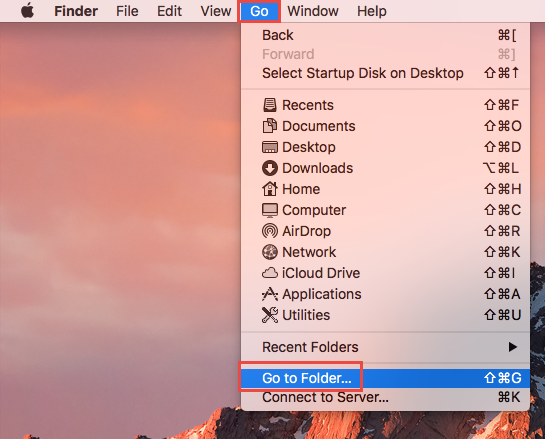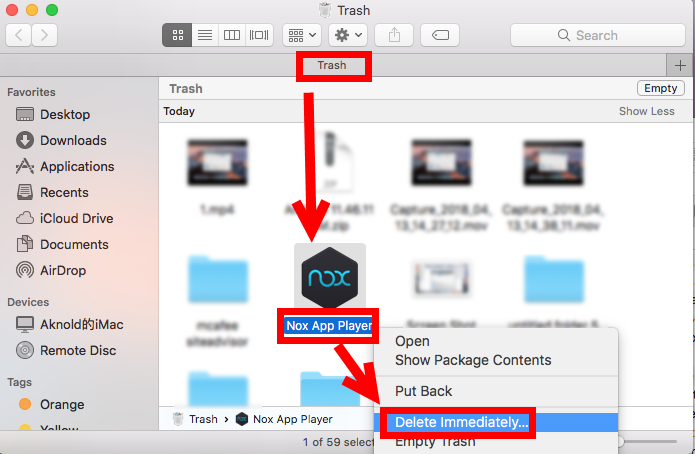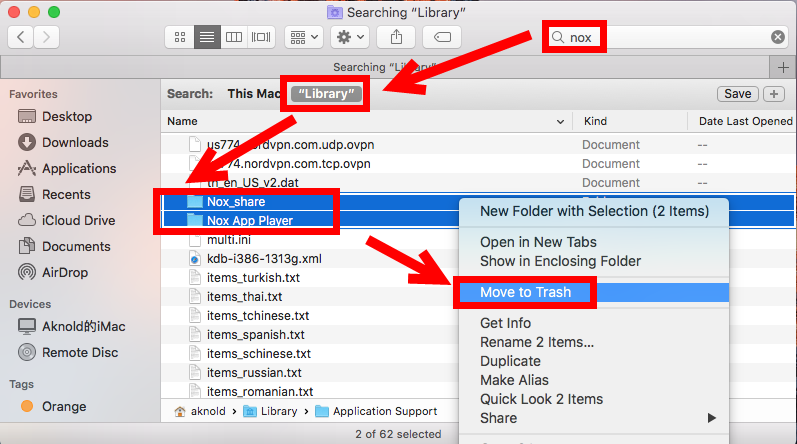I am going to share with you step by step process about how to uninstall Node JS and Node Package Manager(NPM) from MacOS. I will use MacOS terminal to uninstall Node JS and NPM completely.
Nox App Player Mac Uninstall Overview: Nox Program Player for PC can be a completely free Android emulator that allows its users to conduct Android apps and play games on the computers. NoxPlayer comprises full optimization as well as one of the many features that this Android emulator offers, a smooth gaming experience stands out too well as. Browser Hijacker. Some threats reinstall themselves if you don't delete their core files. We recommend downloading SpyHunter to remove harmful programs for you. This may save you hours and ensure you don't harm your system by deleting the wrong files. Download SpyHunter (Free Remover). OFFER.Free Remover allows. App Player Nox App Player is a (games ) Application on Mac which usually can be installed easily and smoothly on your computer, but sometimes it is advisable to uninstall NOx App Player for some reasons, such as: It is not useful on your Mac application does not work properly after installation NOX App Player slows down the performance of the.
April 14, 2020 October 13, 2020 NoxPlayer Release Note andriod 7, mac, Mac version, release note How to fix Nox App Player Mac version won’t start issue or stuck at 99% issue Installing software on a Mac is different from installing software on Windows. Sep 20, 2021 For Mac users, the configuration file is inside the Nox bundle itself. Control-Click on Nox Player App (the application) and choose Show Package Contents. Then you'll find the configuration file inside Contents/MacOS/conf/. Once you're done editing it, do a Get Info on the file and choose 'Locked'.
Follow the Step by Step Process to Uninstall Node Js from MacOS.
Go to MacOS Terminal
You can check out the Node installation in mac by using the below command. It will show node js version installed in your device.
Open the terminal and enter the given below command to know your current directory.
Go to your root directory.
Then enter into the usr directory by using following command.

Go to locale directory.
Enter into include folder by using given below command.
Now if you enter the ls command then you’ll see thenode folder inside the include folder like given below.
We have to remove this node folder to completely uninstall the Node js from MacOS.
Remove node_modules from MacOS
In next step we have to completely remove node_modules from our system.

Follow the steps
Enter the below command to go back to previous folder.
Go to lib directory, hit the below command to enter into the lib directory.
Use the below command to remove the node_modules (NPM) folder.
Enter the below command to come out from the directory.
Go to bin folder using below command.

Here you also have to delete the node folder to uninstall the Node js completely.
Enter the below command to remove the Node js from MacOS.
Bluestacks for macbook air. Finally, we’ve successfully uninstalled the Node JS from MacOS, use the given below command to check whether the Node and NPM completely removed from our system.
We have completed our task if you are getting below output.

Start up from macOS Recovery
Determine whether you're using a Mac with Apple silicon, then follow the appropriate steps:
Apple silicon
Turn on your Mac and continue to press and hold the power button until you see the startup options window. Click the gear icon labeled Options, then click Continue.
Intel processor
Make sure that your Mac has a connection to the internet. Then turn on your Mac and immediately press and hold Command (⌘)-R until you see an Apple logo or other image.
If you're asked to select a user you know the password for, select the user, click Next, then enter their administrator password.
Reinstall macOS
Select Reinstall macOS from the utilities window in macOS Recovery, then click Continue and follow the onscreen instructions.
Follow these guidelines during installation:
- If the installer asks to unlock your disk, enter the password you use to log in to your Mac.
- If the installer doesn't see your disk, or it says that it can't install on your computer or volume, you might need to erase your disk first.
- If the installer offers you the choice between installing on Macintosh HD or Macintosh HD - Data, choose Macintosh HD.
- Allow installation to complete without putting your Mac to sleep or closing its lid. Your Mac might restart and show a progress bar several times, and the screen might be empty for minutes at a time.
After installation is complete, your Mac might restart to a setup assistant. If you're selling, trading in, or giving away your Mac, press Command-Q to quit the assistant without completing setup. Then click Shut Down. When the new owner starts up the Mac, they can use their own information to complete setup.
Nox For Mac
Other macOS installation options
When you install macOS from Recovery, you get the current version of the most recently installed macOS, with some exceptions:
- On an Intel-based Mac: If you use Shift-Option-Command-R during startup, you're offered the macOS that came with your Mac, or the closest version still available. If you use Option-Command-R during startup, in most cases you're offered the latest macOS that is compatible with your Mac. Otherwise you're offered the macOS that came with your Mac, or the closest version still available.
- If the Mac logic board was just replaced, you may be offered only the latest macOS that is compatible with your Mac. If you just erased your entire startup disk, you may be offered only the macOS that came with your Mac, or the closest version still available.
You can also use these methods to install macOS, if the macOS is compatible with your Mac:
Uninstall Box From Mac
- Use the App Store to download and install the latest macOS.
- Use the App Store or a web browser to download and install an earlier macOS.
- Use a USB flash drive or other secondary volume to create a bootable installer.